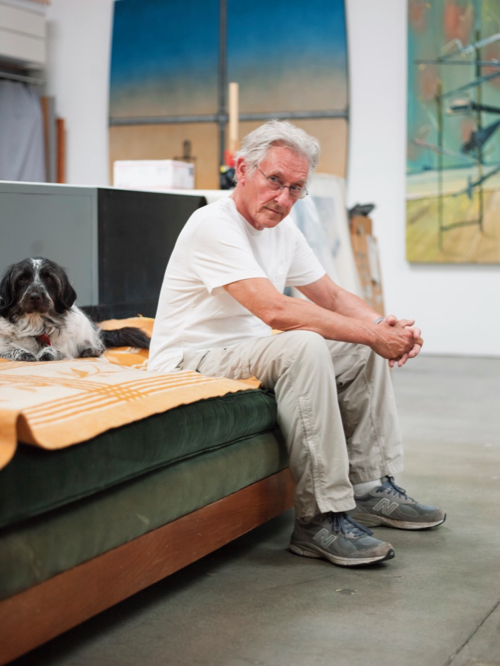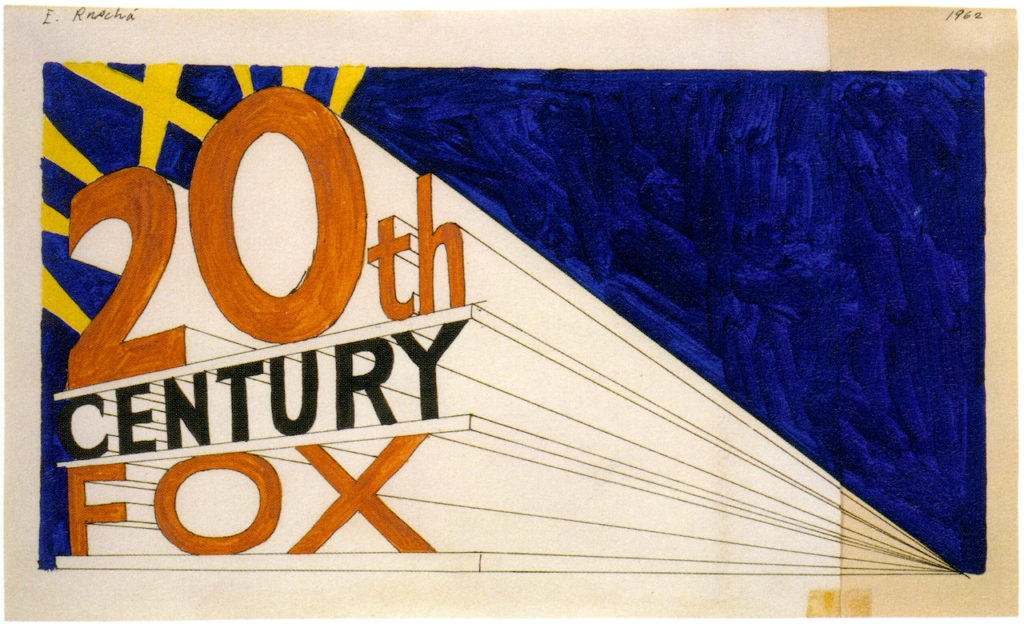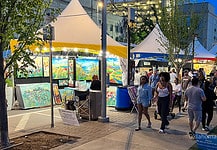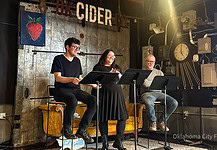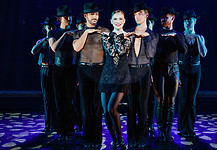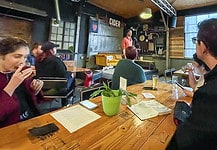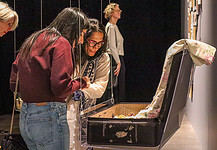Last Updated on February 21, 2021, 2:52 PM | Published: February 21, 2021
Oklahoma City, along with much of the world, has staged an unprecedented transformation over the past decade. A great deal of it is an unhappy change – the COVID-19 pandemic, political decline and turmoil in Washington, and brutal weather extremes. Some of this transformation is more hopeful – the revival of racial justice movements, investments in a booming downtown, and the steady growth of public infrastructure.
Amidst the change the city is undergoing, many of its residents may struggle to trace the outline of its identity – what does it mean to be from Oklahoma City?
Answering questions like these is one of the central goals of art and looking to it now may provide some solace to an anxious population. Oklahoma Contemporary, in particular, has provided the residents of Oklahoma City an unprecedented opportunity to consider the question and its answers, buried in the art of a man whose work is an undisputed pillar of the modern canon, Ed Ruscha (pronounced roo-SHAY).
Historic exhibition
The historic exhibition, Ed Ruscha: OKLA, opened to the public Friday and gives its audience an inspiring perspective on one of our very own that illuminates the meaning of a city whose beauty shaped his work.
The exhibition’s opening was slightly hampered by the double whammy of bad weather, and the longer season of public health crisis.
Both Dr. Alexandra Schwartz, a scholar of modern and contemporary art, particularly Ed Ruscha’s work, and Mr. Jeremiah M. Davis, the artistic director at Oklahoma Contemporary, expressed some sadness at not being able to launch exhibitions as they used to.
For Schwartz, based in New York, it was less than ideal not being able “to see all the works come out of the crates and onto the walls, because you make all these discoveries that you hadn’t made while you were just looking at images …. And, not getting to celebrate in person is just a bummer.” Nonetheless, both co-curators are optimistic that Dr. Schwartz can come down to Oklahoma soon.
Their collaboration on this exhibition dates back at least two years when Mr. Davis first began planning this exhibition. Davis said, “I wanted to ensure that we had a co-curator with experience with Ed and his body of work, and it’s a pretty short list, and Alex is at the top of it.”
For Davis, the purpose of this exhibition was not only for visitors to learn about “a complete rock star of the contemporary art world, but also some pride in where they’re from. That this is a place that can be or can serve as, inspiration for art that is revered around the world.”
Their combined expertise has delivered an exhibition that truly reconceives what art about and in Oklahoma City can look like. It will no doubt serve as a source of pride for many Oklahomans.
Hometown
Ruscha was not born in Oklahoma but came down to Oklahoma City from Nebraska when he was still young. In many ways, Oklahoma City remains his hometown, and traces of the 405 are conspicuous in his work.
The early 20th century was marked by art movements like abstract expressionism (shapes and colors arranged in a generally non-representative manner, see the work of Jackson Pollock or Wassily Kandinsky), surrealism (dreamlike imaginations, see the work of Salvador Dalí), and Dada (nonsensical “anti-art,” see the work of Marcel Duchamp).
These movements, all centered in Europe or the East Coast, were rapidly being responded to in the second half of the century by a new generation of artists born and raised in a post-war consensus, often located in Western cities like Los Angeles, as Ruscha was.
Consumerism, monoculture, and the suburban sprawl were brand new subjects for this generation and shaped the artistic style of the new movement. A fascination with ordinary objects, particularly comics, overrode the previous generations’ lofty ambitions. Imagery from the mass-produced and mass-consumed media of pop culture were also significant characteristics of pop art. For Ruscha, a man living in the center of the American film industry and previously employed at a marketing agency as a graphic designer, there was no better time.
Thematic
The exhibition, however, does not lay out Ed Ruscha’s work so chronologically. Schwartz says it’s not meant to be “a survey of his entire career.” Rather, the museum chooses to guide visitors through a thematic division of Ruscha’s work.
Both Mr. Davis and Dr. Schwartz agree that the goal of this curatorial decision was “thesis-driven,” meant to distill some of the defining characteristics of Ruscha’s work. This choice makes it easier for viewers to understand the special qualities of Ruscha’s work and its relevance for Oklahoma City.
First, “Oklahoma OK” introduces visitors to the influence of Oklahoma on his art, from the Midwestern vernacular to wide-open landscapes.
Next, visitors are confronted by the internal dilemma of a self-described “lapsed Catholic” in “51% Angel, 49% Devil.”
The third theme, “Pop Origins,” displays art that most succinctly defines Ruscha, the art of comic strips, common objects, and advertisements.
“Route 66” interrogates the American institution of the road, driving, and cars, particularly as it relates to the imagery of the American Southwest.
The final theme, “Made in the U.S.A.,” explores an area of Ruscha’s art still developing, the political and socio-economic commentary of American identity.
Yet, a binding
Despite dividing the exhibition thematically, there are threads of continuity that bind Ruscha’s work together. For example, the influence of Oklahoma’s flatness is present in “Oklahoma OK” in the painting Kansas, Oklahoma, but it is equally present on the other side of the exhibition in Any Town in the U.S.A. and Well, Well.
His contemplation of the road crosses the boundaries of “Made in the U.S.A” and “Route 66,” particularly in the display of one of his most famous works, Twentysix Gasoline Stations, perhaps because of the inevitable role of Route 66 in developing the American identity.
The central role of geography in his reflections is also omnipresent, for as Schwartz notes, “recently, the flag paintings are about place, are about symbolism, are about what the American flag means all over the world, and the way in which he sees it as having been tainted in some ways, but it’s still a place.”
His sense of soft and pleasant humor is present throughout, from “Oklahoma OK” to Figure it On Out.
Painstaking detail
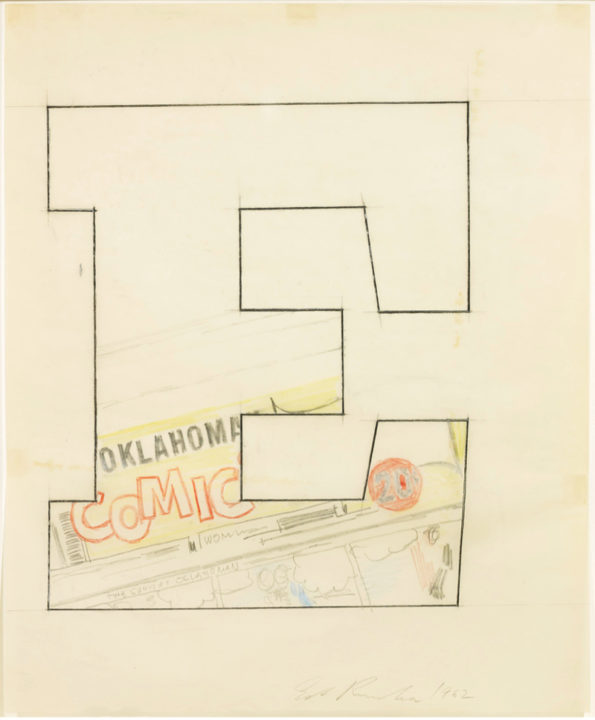
A characteristic of every work, however, which makes their joint origin unmistakable, is the painstaking detail given to words. Ruscha’s fascination with font and typeset serves as a kind of modern answer to the ancient art of calligraphy, with the same precision and beauty present in his work.
The homecoming exhibition of Ed Ruscha’s work ends in a room of chocolate. Panels of paper coated in Hershey’s chocolate, with the tell-tale sign of sugar bloom, cover a room from floor to ceiling.
It’s visually calming, with nothing much for the eyes to strain to see other than a serene golden brown. There’s little sound, no other stimuli for the senses. For many, it can be confusing. It serves seemingly no purpose. But as Schwartz points out, “some people can just think ‘this is hard, I don’t want to do it,’ and in fact, it’s supposed to be hard, and you’re not dumb because you think it’s hard. It’s intentionally hard, and the artists often think it’s hard too.”
Questions
Art like this is just the beginning. The questions it brings to the surface of the viewers’ minds are the start of something new. What is art? What can art be? What’s the point of art?
These questions prompt new ways of thinking, and those ways of thinking are equally crucial in answering questions like: what is Oklahoma City? What can Oklahoma City be? And what’s the point of living here? Thinking about these questions requires looking back at what this city used to be and how it responds to change.
Ed Ruscha’s work, then, reveals some important qualities of Oklahoma City.
Oklahoma City is a city of openness, flatness, and strong right angles. It’s a city of the West and the road. It’s a city that owes as much of its wealth to the oil fields of the Earth beneath it as it owes its beauty to the freedom of the skies above it.
But as we collectively embark on a journey into a new age, some of these characteristics are juxtaposed by a singularly defining trait, for as Mr. Davis comments, “there’s been one constant in Oklahoma City’s short life as a city, and that’s change. I mean, the city was founded and the next day there were 10,000 people were living here, so that type of rush of energy and speed, that’s always been part of here.”
Ed Ruscha: OKLA is exhibited at the Oklahoma Contemporary until July 5, 2021, and tickets are free but capped at five per thirty-minute intervals. Masks are required.
Devraat Awasthi is an art reporter for Free Press, a full-time law student at the University of Oklahoma, and is interested in pop culture’s role in public communities.


